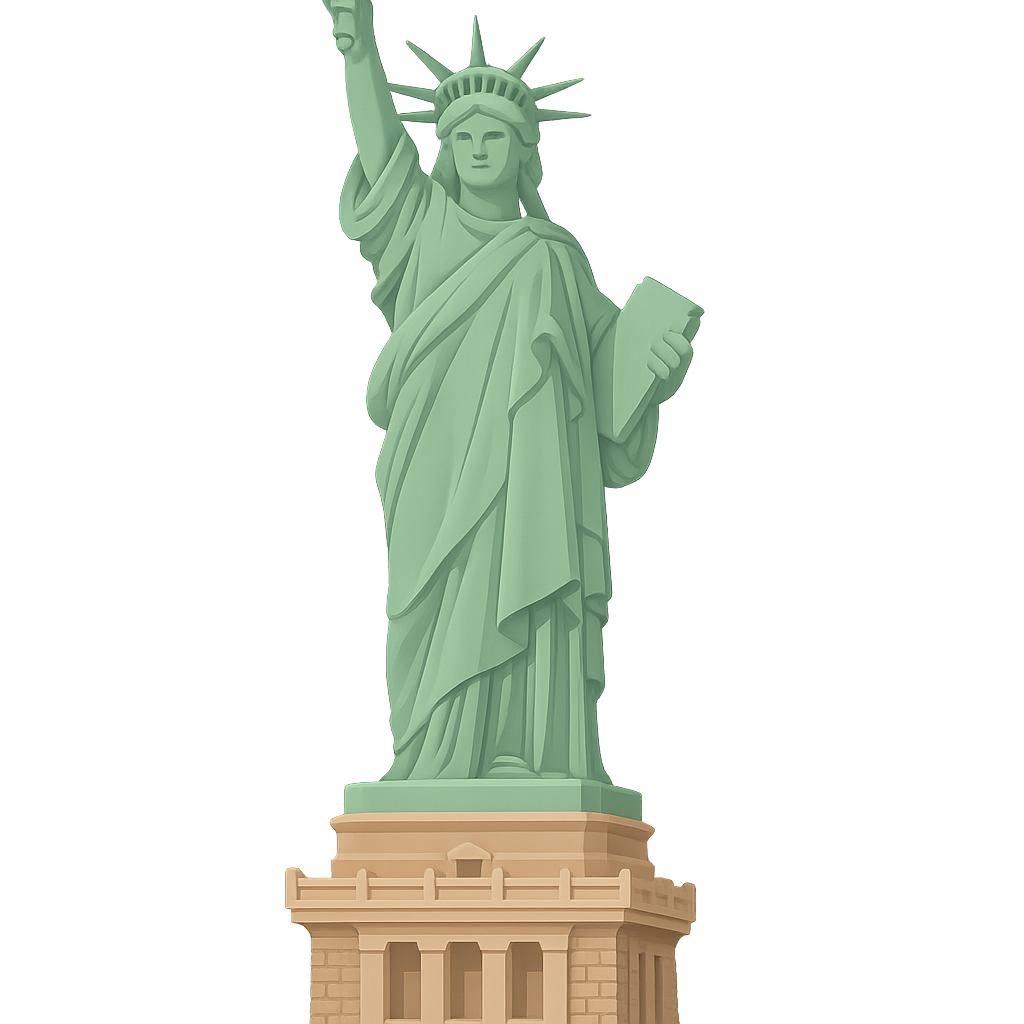The Green Giant of the Harbor
I stand in the middle of a busy harbor, watching the world sail by. My feet are planted firmly on a star-shaped island, and the great city of New York sparkles just across the water. All day long, little boats and giant ships glide past me, their passengers waving up at my tall, green shape. The sun warms my copper skin, which turned a lovely sea-green long ago. A heavy toga drapes over my shoulders, and in my left hand, I hold a special tablet with a date on it. In my right hand, I lift a golden torch high into the sky, a light for all to see. On my head sits a crown with seven points, like rays of sunshine reaching out to the seven continents of the world. For over a hundred years, I have been a silent watcher, a greeter, and a guardian. I am the Statue of Liberty.
My story began far away, across a wide ocean, in a country called France. It started as a grand idea in the mind of a man named Édouard de Laboulaye. In 1865, after a terrible Civil War had ended in America, he wanted to give a gift that would celebrate freedom and the strong friendship between our two countries. He shared his idea with a talented sculptor named Frédéric Auguste Bartholdi, who was so inspired that he dedicated years of his life to making me. He wanted me to look strong and peaceful, so he designed my face to look like his own mother’s. Imagine that. In a huge workshop in Paris, workers hammered and shaped giant sheets of copper over wooden forms. I wasn’t built all at once, but in many small pieces, like a giant puzzle. For years, people in Paris could see my head or my arm on display as Bartholdi worked to bring me to life.
Building my beautiful copper skin was only one part of the challenge. How could a statue as tall as a skyscraper stand up to the powerful winds that whip across the harbor? For that, I needed a strong skeleton. Another brilliant man from France, Gustave Eiffel, designed it. Yes, the very same man who would later build the famous Eiffel Tower. He created an amazing iron frame inside me that is both strong and flexible, allowing me to sway just a little in the wind so I don't break. Once I was complete, a new adventure began. In 1885, I was taken apart into 350 pieces, carefully packed into 214 wooden crates, and loaded onto a ship called the Isère for my journey across the stormy Atlantic Ocean. While I was sailing, the people in America were working hard, too. A newspaper man named Joseph Pulitzer asked everyone to help pay for my pedestal, the giant stone base I stand on. Schoolchildren sent in their pennies, nickels, and dimes, and together, they raised the money to give me a proper home.
On October 28, 1886, everything was finally ready. A huge crowd gathered as I was officially dedicated to the American people. It was a day of celebration. I was no longer just a statue; I was a promise. I stood for freedom, hope, and a warm welcome to all who dreamed of a better life. A wonderful poet named Emma Lazarus wrote a poem for me called 'The New Colossus,' and its words are written on a plaque inside my pedestal. They speak of welcoming the 'tired' and 'poor' who long to be free. For many years, I was the first thing millions of people saw as they arrived at nearby Ellis Island to start new lives in America. Looking back, I see I have stood through time to remind people of their strength, their hopes, and the powerful bond of friendship that can cross any ocean. I am a beacon of hope, and my torch will never go out.
Reading Comprehension Questions
Click to see answer
